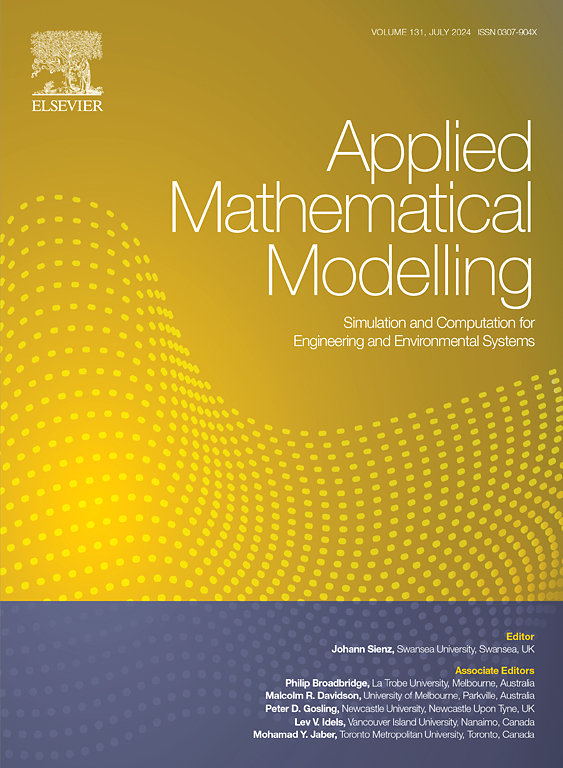超弹性材料有限变形的总拉格朗日伽勒金自由单元法
IF 4.4
2区 工程技术
Q1 ENGINEERING, MULTIDISCIPLINARY
引用次数: 0
摘要
本研究提出了一种用于超弹性材料有限变形分析的总拉格朗日 Galerkin 自由单元法(GFrEM)。该方法以初始构型为基准,推导出全拉格朗日公式。超弹性材料的力学行为由非胡肯应变能函数建模。由于在 GFrEM 中,拉格朗日等参数元素是通过与周围节点配位而自由形成的,因此可以像有限元方法一样简单地施加内在边界条件。此外,在构建每个配位节点的方程时,还使用了 Galerkin 方法来确保结果的稳定性。通过几个二维和三维数值实例,包括超弹性材料的弯曲、压缩和扭转,验证了所提方法的有效性和收敛性。近不可压缩材料的实例表明,即使在有限元法无法收敛的大变形情况下,GFrEM 仍能保持高精度。本文章由计算机程序翻译,如有差异,请以英文原文为准。
A total Lagrangian Galerkin free element method for finite deformation in hyperelastic materials
In this research, a total Lagrangian Galerkin free element method (GFrEM) is proposed for the analysis of finite deformation in hyperelastic materials. This method derives the total Lagrangian formulation using the initial configuration as the reference. The mechanical behavior of hyperelastic materials is modeled by the non-Hookean strain energy function. Since Lagrangian isoparametric elements are freely formed in GFrEM by collocation nodes with their surrounding nodes, intrinsic boundary conditions can be imposed simply as in the finite elements method. In addition, the Galerkin method was used to ensure the stability of the results when constructing the equations for each collocation node. The validity and convergence of the proposed method are verified by several two- and three-dimensional numerical examples that include bending, compression, and torsion of hyperelastic materials. The example of nearly incompressible material shows that GFrEM remains highly accurate even with large deformations where the FEM cannot converge.
求助全文
通过发布文献求助,成功后即可免费获取论文全文。
去求助
来源期刊

Applied Mathematical Modelling
数学-工程:综合
CiteScore
9.80
自引率
8.00%
发文量
508
审稿时长
43 days
期刊介绍:
Applied Mathematical Modelling focuses on research related to the mathematical modelling of engineering and environmental processes, manufacturing, and industrial systems. A significant emerging area of research activity involves multiphysics processes, and contributions in this area are particularly encouraged.
This influential publication covers a wide spectrum of subjects including heat transfer, fluid mechanics, CFD, and transport phenomena; solid mechanics and mechanics of metals; electromagnets and MHD; reliability modelling and system optimization; finite volume, finite element, and boundary element procedures; modelling of inventory, industrial, manufacturing and logistics systems for viable decision making; civil engineering systems and structures; mineral and energy resources; relevant software engineering issues associated with CAD and CAE; and materials and metallurgical engineering.
Applied Mathematical Modelling is primarily interested in papers developing increased insights into real-world problems through novel mathematical modelling, novel applications or a combination of these. Papers employing existing numerical techniques must demonstrate sufficient novelty in the solution of practical problems. Papers on fuzzy logic in decision-making or purely financial mathematics are normally not considered. Research on fractional differential equations, bifurcation, and numerical methods needs to include practical examples. Population dynamics must solve realistic scenarios. Papers in the area of logistics and business modelling should demonstrate meaningful managerial insight. Submissions with no real-world application will not be considered.
 求助内容:
求助内容: 应助结果提醒方式:
应助结果提醒方式:


